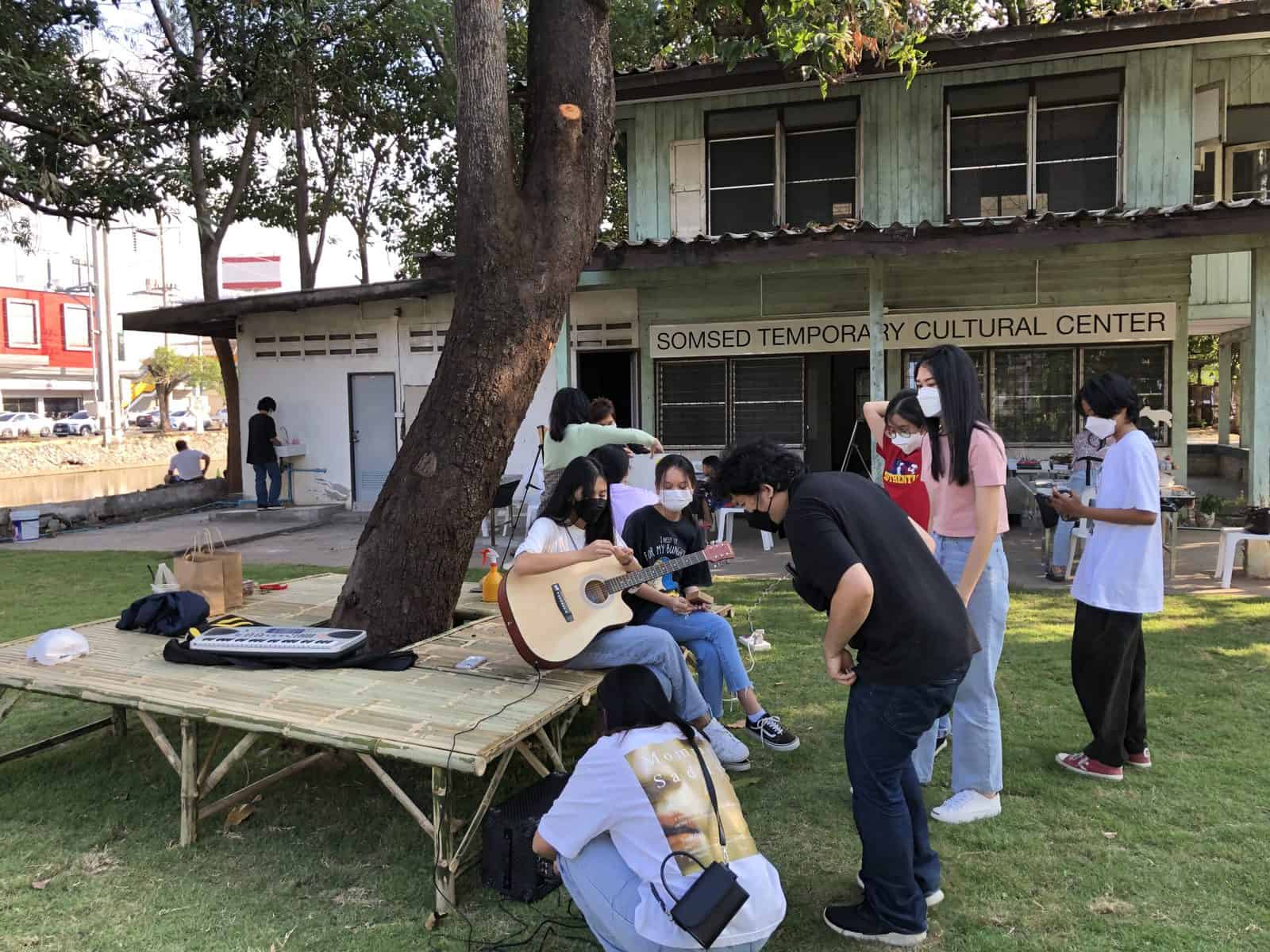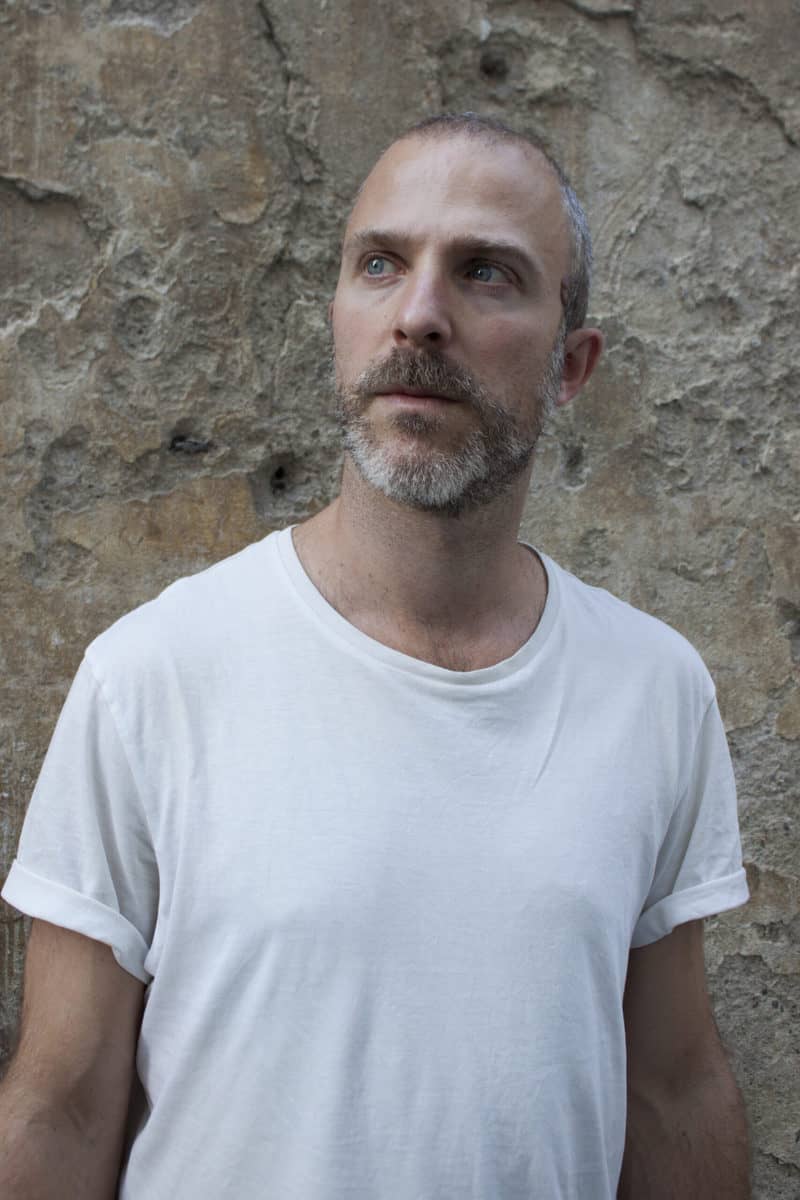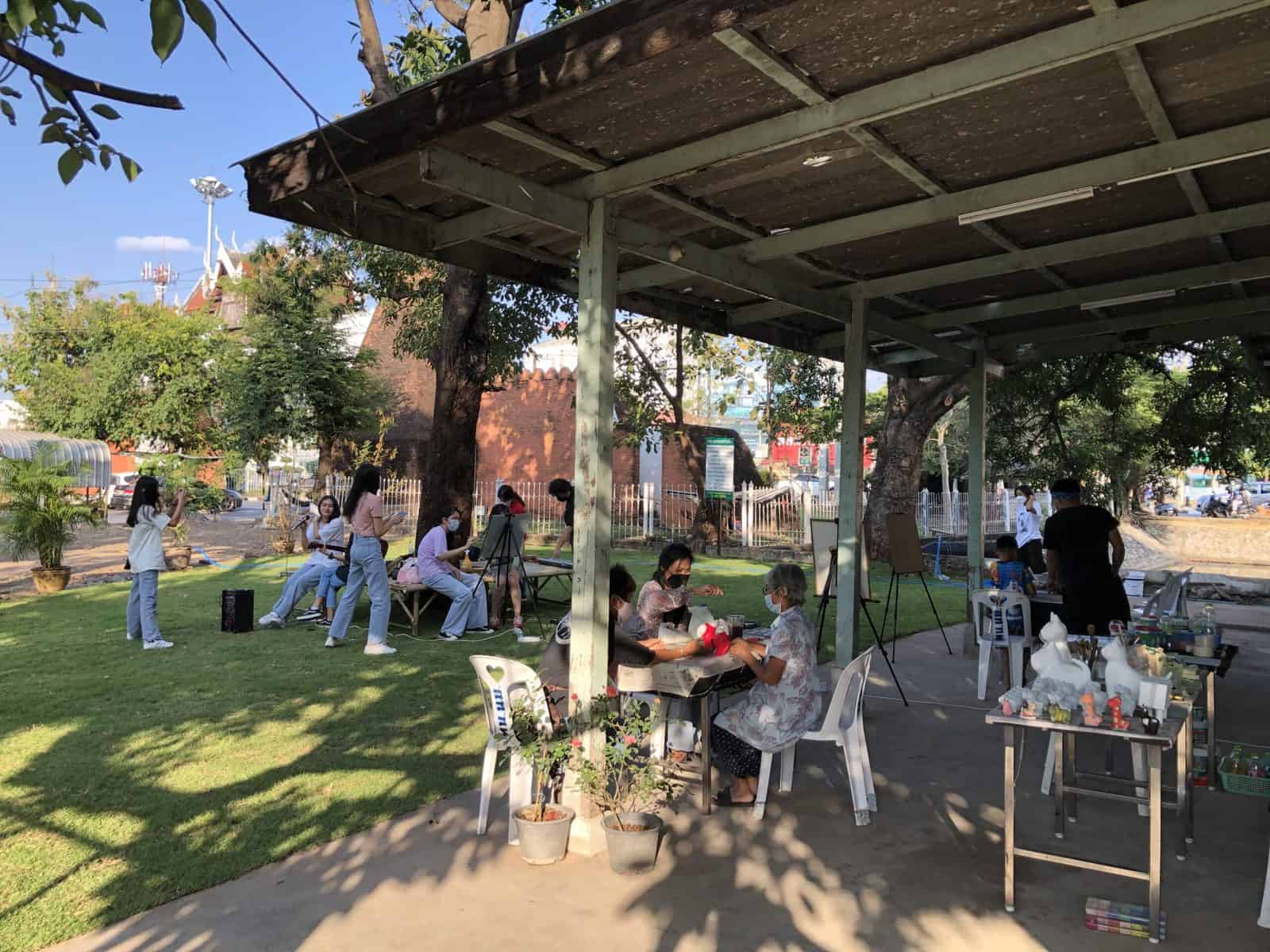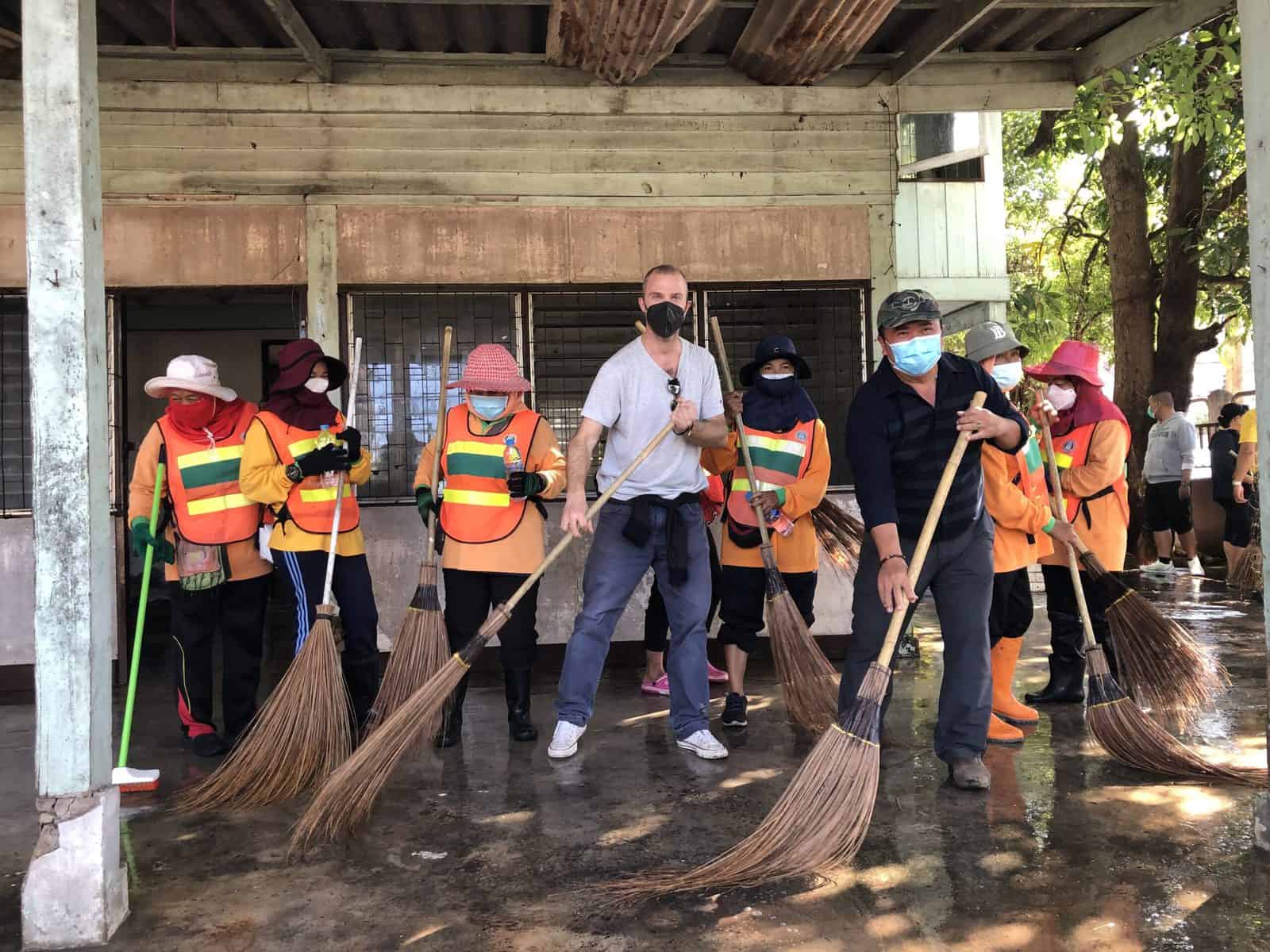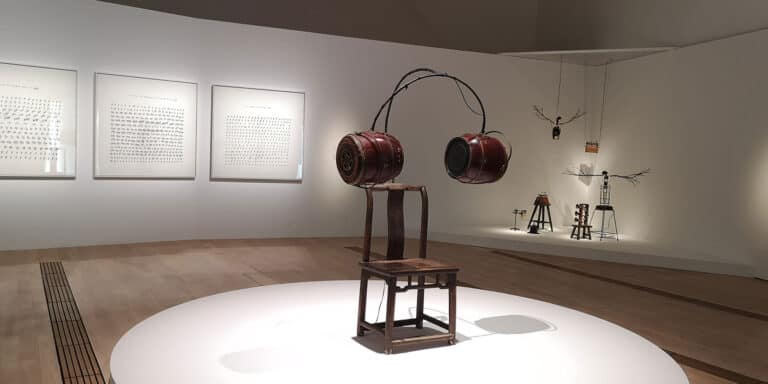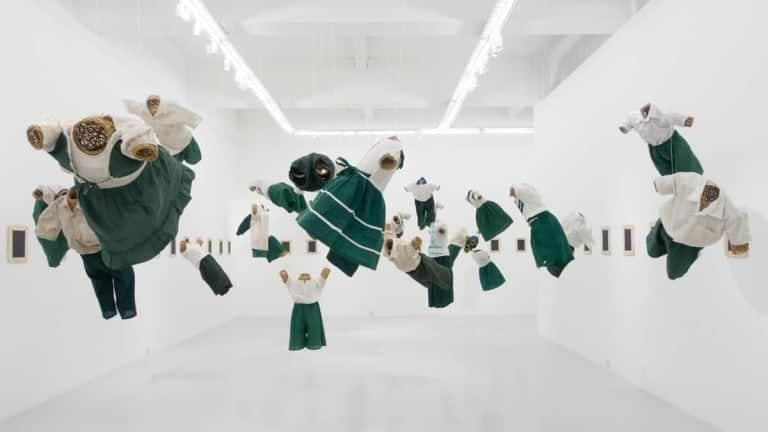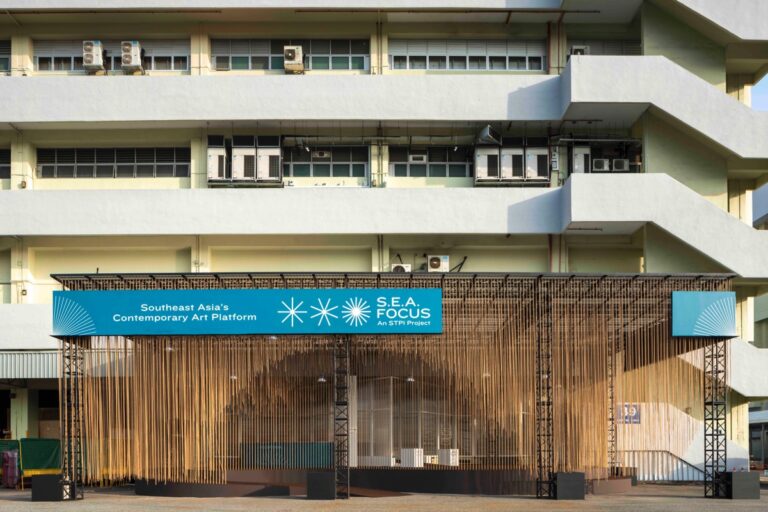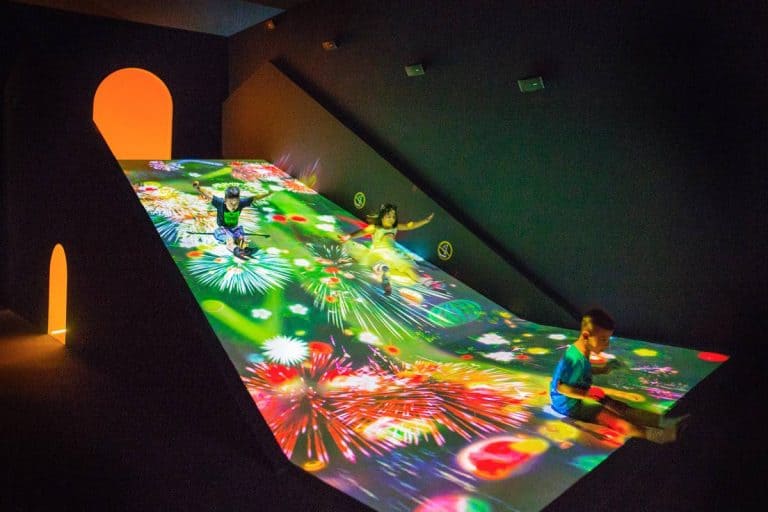What makes you feel like you belong in a particular place in the world?
Maybe you were born there or you moved to a certain city in search of opportunities or a new culture.
Or perhaps it’s because you have a family there, a job, or some very good friends.
At times, it’s even simpler. Perhaps it’s just the presence of one cafè, or a gym, or a beach, or a church, or book club – somewhere where you can simply hang out and relax. A spot where you know you’ll find a group of like-minded people at any time of day to engage in discussions or activities of interest to you. We all need our version of the Ancient Greek agorà – a term which refers to a “gathering place” or an “assembly.”
Creating such places in busy contemporary cities is what Italian artist Giacomo Zaganelli‘s practice is all about. Now, he has brought this vision to Thailand, and more specifically to the latest edition of the Thailand Biennale Korat, dubbed Butterflies Frolicking on the Mud: Engendering Sensible Capital.
The Thailand Biennale previously took place in Krabi in 2018, and marked its return in 2021 with a move to Korat, a province with rich ties to nature and history. This edition of the Thailand Biennale had artists create site-specific works across Korat to present art and culture in local areas and encourage cultural tourism.
Biennale curators Yuko Hasegawa, Tawatchai Somkong, Vipash Purichanont, and Seiha Kurosawa invited local and international artists to come together and work with Korat locals in sustainable ways that enriched the community. They collaborated with experts to produce artworks and art projects that engage with nature, infrastructure, and institutions, while sustainably optimising local resources. The Biennale’s venues, including eight projects for permanent installation, are scattered across 13 locations in Korat.
The question of space
“I’m aware that the concepts of private and public spaces are radically different in Southeast Asia, as compared to Europe,” says Florence-born-and-bred Giacomo, who calls me from Krabi.
He’s taking a break there, after setting up his project in Korat.
A keen observer of how architecture shapes everyday living, Giacomo shares, “in Europe, and in Italy in particular, we have squares as gathering places while in Asia, most people tend to meet in the mall or the market. The tropical climate (in Asia) also encourages people to find relief in air-conditioned places.”
“However, this (trend) is also due to exponential economic growth and rampant modernisation which has destroyed traditional gathering places,” he continues.
In his view, the best quality of life is achieved in places where people have fulfilling daily social interactions. It perhaps then goes without saying that a thriving city is marked by the liveability of its spaces — something that curators and artists like Giacomo were well aware of as they embarked on their works for the Biennale.
Creating a community
In the spirit of the Biennale, Giacomo created the Somsed Temporary Cultural Centre, an artwork and artist-run space for people in Korat to experience contemporary art in a new, community-centric format.
“The goal is to highlight the potential of art towards society, through exhibitions, workshops and lectures,” says Giacomo.
Keeping in line with the Thailand Biennale’s focus on sustainability, Giacomo, together with the help of paid workers, revitalised an old building to house Somsed. Located in the city centre, Giacomo calls its accessible location “strategic,” explaining that all people – not just art world insiders – will be able to visit it. He also notes that it is a great location to connect with institutions and associations within the city.
The Thai word somsed means ‘tapir’ and refers symbolically to the concept of a ‘mixture’.
“The name of this project takes inspiration from an animal that represents Thailand’s many characteristics,” shares Giacomo.
“The idea was to connect my community-based artistic practice with a site-specific project that will continue over time, and hopefully, it won’t be dismantled at the end of the Biennale.”
The space offers diverse activities that aren’t just about art and exhibitions, offering everything from yoga and textile-making, to co-working spaces and English lessons. Giacomo noticed that the young soon ditched their favourite cafés to gather there to work and play.
While Giacomo quickly teamed up with local collaborators and institutions upon arrival, he shared that there was scepticism from the general populace, who thought that the entire project consisted of a foreigner wanting to restore the building for himself. He thought this was funny but understood where they were coming from since many foreigners come to Thailand to do nothing more than build vacation homes, and fail entirely to engage with the local populace.
Slowly, as articles on Somsed started appearing in local magazines and on Facebook, the project gained traction, and over 100 people showed up to volunteer at the space across a period of three weeks. The volunteers supported the project’s paid workers and were involved with cleaning the garden, remaking the building, overseeing the space, and organising activities.
While he didn’t initially plan to involve members of the public, Giacomo welcomed the volunteers’ spontaneous participation. Such participation relates back to his artistic practice, which focuses on social engagement and public intervention.
Giacomo explains his intention behind revitalising the building, saying, “We never wanted to be invasive, but rather, wanted to be respectful of the spirit of the place as much as possible. After we fixed the space, many people felt like it had been there forever. We wanted to be about the actual programming in the space and its benefits for the community, and not about the (building’s) façade.”
An inclusive space in Korat
“Korat City is only a few hours away from Bangkok, so it’s a place where people transition through on their way to other cities in the country,” explains Giacomo.
“However, many people in the art world here have noted that there is nothing quite like Somsed.”
“As I see it, it’s because of this great need for a multidisciplinary community space in this part of the country that Somsed has grown popular in such a short amount of time,” he muses.
Going back to his inspiration of the agorà, Giacomo adds, “I saw most of the works from the Thailand Biennale being placed in elite places, like the Rajamangala University of Technology Isan Nakhon Ratchasima. What I really wanted to do was to have something that was accessible to everyone. I feel this project is political, in the sense of taking care of ‘the polis’, the city.”
Through its engagement of the public, Somsed embodies the Thailand Biennale’s aim of contributing to Korat’s social infrastructure. While the space is temporary and will only run for the duration of the Biennale, Giacomo concludes that “its goal is to highlight the potential of art in society, especially in terms of inspiring, exchanging and sharing (new ideas).”
“I hope this awareness of what’s possible will stay with us long after the Biennale.”
______________________
All images courtesy of the artist. The Thailand Biennale Korat will run until 31 March 2022. The Somsed Temporary Cultural Centre is located at 51 Thanon Pollarn, Tambon Nai Mueang, Nakhon Ratchasima, Thailand Chang Wat Nakhon Ratchasima 30000.
